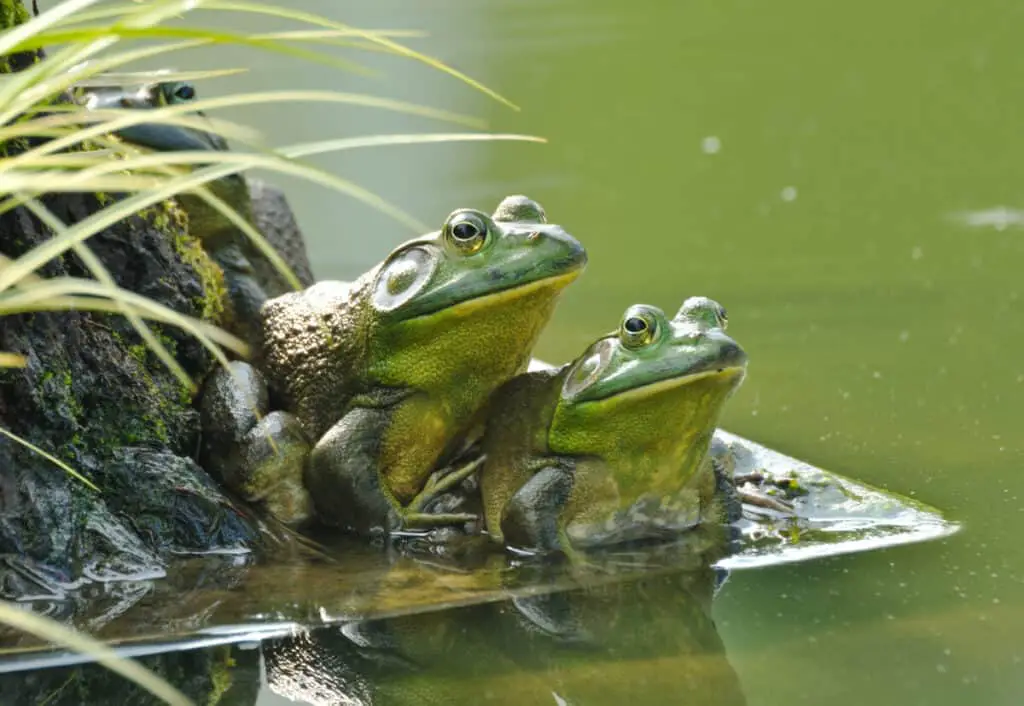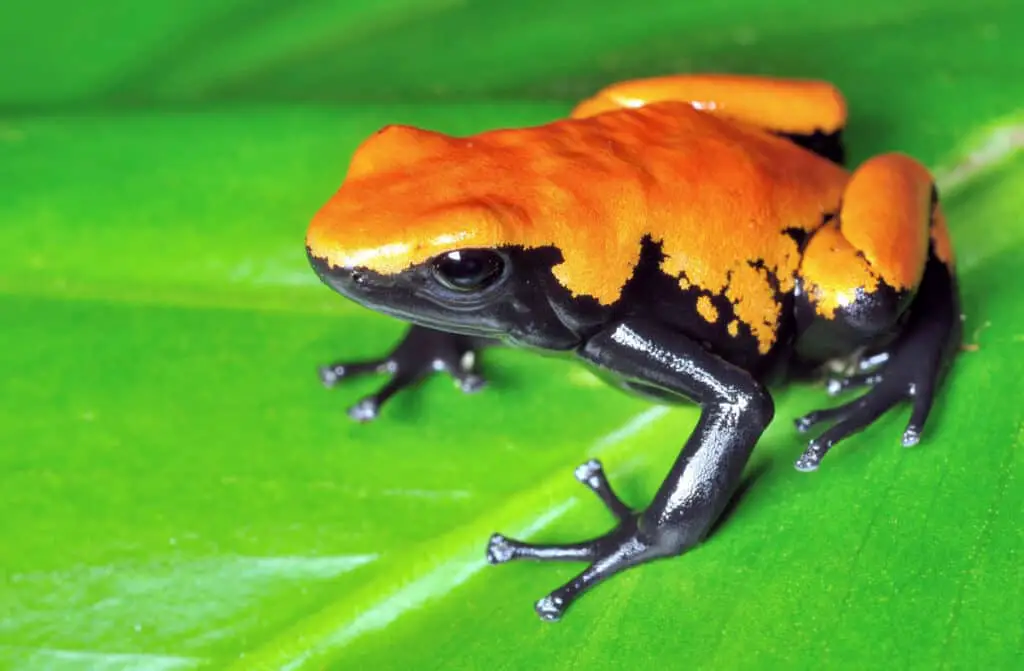Amphibians are a class of animals that include frogs, toads, salamanders, and caecilians. They live both on land and in water, and they have some unique features that help them survive. One of these features is the cloaca, which plays an important role in amphibian biology.
The cloaca is an opening found near the end of the digestive tract of all amphibians. It’s basically a single chamber that receives waste from the intestine and urinary system before excreting it out of the body.
The cloaca also functions as part of the reproductive system for some species, allowing for internal fertilization and egg-laying. We’ll look at these processes in more detail shortly.

Overview Of The Cloaca
The cloaca is a significant organ in amphibians, and it serves multiple functions. It is a multi-purpose chamber located at the end of the digestive system, and it connects to the urinary bladder, reproductive organ, and rectum. The cloaca itself is divided into three sections: the vestibule, coprodeum and proctodeum.
The vestibule sits between the coprodeum and proctodeum and acts as a common passageway for waste products from both chambers. During mating season this area functions as a reproductive organ for many species of amphibians.
The coprodeum is where feces are stored before they are eliminated from the body while the proctodeum is where urine enters or exits depending on direction of flow.
In addition to its role in digestion, excretion, and reproduction, the cloaca also functions as an essential part of respiration for some species of amphibians such as frogs and salamanders. The presence of highly vascularized tissue in this area helps facilitate gas exchange which helps these animals breathe underwater for extended periods of time. This process is known as cloacal respiration.
Overall, the cloaca serves many vital roles in amphibians including digestion, excretion, reproduction, and respiration – making it an incredibly important organ within this animal group.
Excretion Of Waste
The cloaca is an organ with many functions in amphibians, one of which is the excretion of waste products. It serves as a single opening for urination, defecation and reproduction.
Urine, feces and reproductive fluids all pass through the cloaca in these animals. The cloaca is also responsible for producing urea and uric acid which are important metabolites produced by amphibians to help eliminate nitrogenous wastes from the body. Urea and uric acid are both broken down into ammonia and carbon dioxide and then released into the environment through the cloaca. This process helps to keep the animal’s internal environment stable.
In addition, some amphibians use their cloacae as a means of respiration by allowing water to enter through them when they submerge themselves in water. This allows them to absorb oxygen from the surrounding environment without having to come up for air. This process is known as cutaneous respiration or skin breathing.
As such, the cloaca serves multiple purposes beyond simply excreting waste products from the body.
Role In Reproduction
The cloaca plays a vital role in reproduction for many amphibians. This opening of the reproductive and digestive systems is found in all members of the Anura (frogs, toads) and Urodela (salamanders) orders, as well as some species of snakes and lizards. The cloaca is located at the end of the animal’s body cavity, formed from the rectum, bladder, and genital ducts.
During mating season, males excrete spermatozoa into the female’s cloaca. The sperm cells then travel up through her oviduct, where they are fertilized with an egg cell. In some species of amphibians, such as frogs and salamanders, eggs may be laid through the cloaca. These eggs are then fertilized directly by spermatophores secreted by males or from stored sperm inside females.
Many species also utilize a process called external fertilization to reproduce. This occurs when males release spermatophores into the water which are then picked up by females. The spermatophores are carried to her cloaca and deposited into her oviduct where they become fertilized with an egg cell. This method is especially common among aquatic species such as frogs and newts where internal fertilization would be difficult or impossible due to their aquatic environment.
Reproduction in amphibians relies heavily on their unique reproductive organ: the cloaca. It serves several important functions in mating behavior and egg-laying in a variety of different species across both aquatic and terrestrial habitats. Through its role in external or internal fertilization, it ensures that these animals continue to survive even amidst changing environmental conditions.
Internal Fertilization
The cloaca plays a major role in amphibian reproduction by providing a single exit point for both reproductive and digestive systems. This arrangement allows the animals to reproduce through internal fertilization, as opposed to external fertilization like most other aquatic animals. During internal fertilization, sperm is delivered directly into the female’s body, where it can travel up the oviduct and reach her ovaries. Once inside the oviduct, the sperm will meet with an egg and begin the process of fertilization.
The cloacal opening of amphibians also serves as a site of sexual selection. During mating season, males will compete for access to females by displaying courtship behaviors in order to entice them. These behaviors may include vocalizations, head bobbing or tail waving – all done near the cloaca of the female in order to demonstrate their worthiness as mates.
In addition to its reproductive functions, the cloaca also serves an important role in excretion and gas exchange. It is here that carbon dioxide and nitrogen waste products are released from the animal’s body into the water surrounding them. The cloaca acts as a one-way passage for these materials, allowing them to be quickly expelled from the organism without causing any harm or discomfort.

Egg-Laying
The cloaca is the organ that makes egg-laying possible in amphibian species. It’s a single opening that serves both as a reproductive and digestive passage, connecting the urinary tract and genital organs to the intestines.
This unique organ enables amphibians to deposit their eggs in water or moist soil without having to build nests or carry them in their mouths. With just one quick movement, they can lay their eggs safely and quickly.
Amphibians lay eggs that are surrounded by a jelly-like substance called the albumin which acts as a protective layer for the embryo inside. The albumin also contains nutrients and oxygen, providing sustenance until the larvae hatch and become independent.
The albumin surrounding each egg is also used to help keep them together after they’ve been laid, forming clumps or rafts of eggs which can be found in many aquatic habitats.
By having a cloaca, amphibians are able to reproduce quickly and with minimal effort – an invaluable trait for any species trying to survive in a rapidly changing environment. They’re able to pass on their genes at high speed, allowing their species to adapt quickly to changing conditions and ultimately thrive in new environments.
Conclusion
In conclusion, the cloaca is an important organ in amphibians. It serves many vital functions and is essential to the species’ survival.
It helps them excrete waste, and also plays a role in reproduction. Through internal fertilization, sperm and eggs can be stored within the cloaca, allowing for egg-laying to take place.
Without the cloaca, amphibians would not exist as we know them today. It’s clear that this organ is integral to their lives, and understanding its role is worth further exploration.

